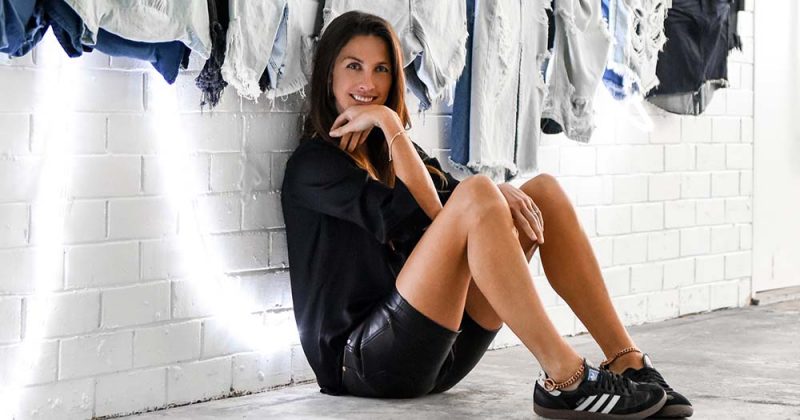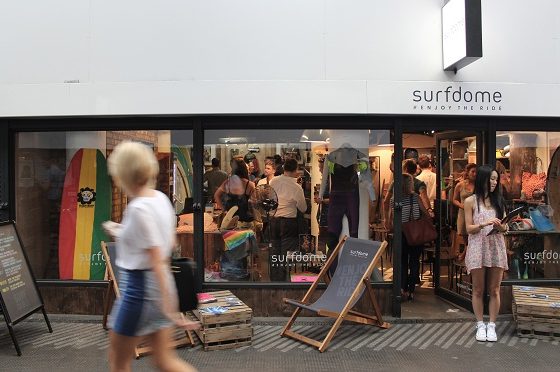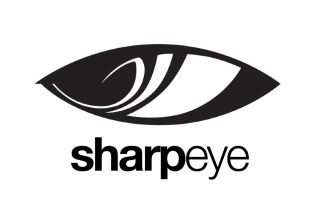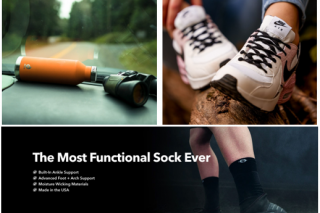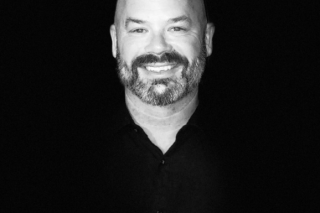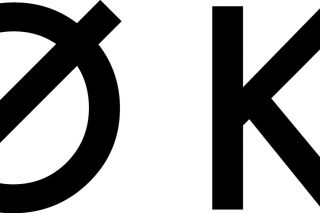Behind one of Australia’s hottest fashion exports, One Teaspoon, you’ll find the quintessential modern success story; a young lass from a small coastal town hits the big smoke armed merely with a go-get-‘em attitude and a suitcase full of dreams. The talented twenty-one year-old upstart then turns the fresh designs initially devised, cut and sewn in her bedroom into a globally recognised brand with an annual turnover of $6 million in just seven short years. ASB chats to One Teaspoon’s visionary Jamie Blakey about her label’s meteoric rise to the top of the fashion crop.
This article first appeared in issue#27 of Australasian Surf Business Magazine
There’s a factory in Sydney’s now-hip suburb of Waterloo that stands out from the pack; painted a proud shade of pink, its signage proclaims the aptly-named building to be The Pink Factory, and it’s the home to One Teaspoon.
Just like Waterloo’s own radical transformation over the past decade from slum-infested industrial wasteland into a thriving, vibrant and artsy bohemian precinct, The Pink Factory itself recently underwent the make-over from rundown warehouse to the bustling new HQ for one of this county’s most influential young fashionistas. It’s now a fitting hub for a self-taught designer and self-made business woman whose One Teaspoon label rakes in well over $6 million dollars a year, is stocked in over 200 of the hippest shops across the country, has spawned its own popular signature stores, consistently out-performs established players across boutiques and majors like DJs and Myer, finds it’s way onto the bony backs of brat-pack style icons like Nicole Ritchie and Mischa Barton, and has infiltrated UK’s retail Meccas like Harrods, Selfridges, and Topshop.
Originally hailing from Maroochydore on Queensland’s Sunshine Coast, Jamie was a motivated kid who started displaying true entrepreneurial spirit early; at fourteen she set up a studio in her mum’s garage to style fashion shoots for local modelling agencies, despite zero experience in the field. “I wanted to be a fashion photographer, so I just started. I got a second-hand camera, a backdrop, and all the lamps from around the house. Then I went to the local agencies and started doing test shoots with the girls, charging $100 per roll – not bad money! I did their hair and make up, and styled the shoots borrowing clothes from the local stores. Pretty funny, but some of the shots aren’t bad!” she recalls.
Then at 17, straight after graduating from high school, bold young Jamie moved to the bright lights of Sydney “just to see what would happen”. The next couple of years provided the teenager with a wealth of experiences that ultimately primed her for future success, including starting her own jeans alteration business when she was 18, in between jobs, and eager to earn extra coin.
“I just made up some business cards and dropped them in at all the stores selling jeans in my area. It did well, but it was so boring!” Jamie remembers of the dreary nights spent darning denim – but the enterprise reinforced the fact she was on the right track if she combined her natural aptitude for both fashion and business. Around this time, Jamie also undertook a brief stint as a surf rep, working for Hot Tuna in their Sydney office and absorbing everything she was shown about the surf rag trade. “I learnt a lot; it was while I was there I realized how big the gap in the market was for something like One Teaspoon.”
Still toying with ideas for designs to fill the fashion void she’d identified, Jamie was waiting for a friend to show up for their ritual morning coffee – with one sugar, thanks – when she came up with the name for her fledgling fashion collection; One Teaspoon. Her edgy yet accessible and flattering designs seemed to provide the missing link between high fashion and sheer wearability, and almost overnight the brand seemed to gather momentum. Fast-forward seven years, and OT has become a powerhouse label that blazes its own trails by consistently churning out the kinds of threads that tuned-in youth simply froth over.
So how did One Teaspoon become such a runaway smash? , Director of CirQlate Publicity, has been with Jamie for OT’s entire wild ride. Having first met through a work colleague, the duo soon found themselves sharing an office during Jamie’s time at Hot Tuna at the tail end of the ‘90s, and the pair got on so well they wound up living together. By the time they resigned from their jobs to start their own businesses, they’d become best friends and steady allies.
“Jamie started One Teaspoon at a time when no one else was doing anything like what she was offering. She’s always had a really unique sense of style, and this translates over to her designs. She’s never followed trends and always remains true to the brand’s integrity; she takes risks and dares to be different, which people respond really well to,” Jen says. Jen’s also well placed to paint a more personal picture of the ambitious young designer that’s managed to take the Aussie fashion world hostage while still managing to juggle roles as a top-notch friend, wife (Jamie’s married to WSL Commentator Ronnie Blakey), and mum a tribe of three children. “Jamie’s quirky, hilarious, fun, driven, passionate, loyal, inspirational, stubborn, and – most importantly – brilliant!” Jen attests.
“Jamie’s quirky, hilarious, fun, driven, passionate, loyal, inspirational, stubborn, and – most importantly – brilliant!”
Think doing PR for a red-hot brand like OT would be a cakewalk? While the press have always seemed to be wildly responsive with OT, and the label has featured extensively across the major newspapers, teen mags and style guides, Jen says initially there was lots of scheming going on behind-the-scenes. “In the early stages we worked hard to get the brand noticed. There wasn’t loads of money, so that forces you to be creative with what you have – we’ve always thought outside of the square in terms of marketing and PR.”
The brand still pulls clever publicity-hijacking stunts, like sending out One Teaspoon models as meter-maids to patrol the busy car-park spaces around Fashion Week and save people from over-zealous parking inspectors by putting coins in expired meters. But ever since word got out about OT’s so-hot-right now rep, they’ve basically been just one step away from beating reporters back with sticks. “As the brand became better known, everyone jumped on board and wanted to know about Jamie and her success. Especially considering her achievements at such a young age, we have always had a good angle! But the thing that really keeps the press interested is the constant evolution of the brand; Jamie isn’t afraid to go where others normally wouldn’t, so there is always interesting and exciting stuff happening which keeps everyone wanting to know more,” says Jen.
“Jamie isn’t afraid to go where others normally wouldn’t, so there is always interesting and exciting stuff happening which keeps everyone wanting to know more.”
We’re sure there will be plenty more reams of exposure for Waterloo’s gleaming Pink Factory yet – One Teaspoon’s unique approach has never stopped with its garments. Staying professional yet refusing to be constrained by the usual orthodox methods of production means things like Jamie racking off to Bali for four weeks while she designs the next range is totally on the cards. Having fun while punching the work clock? Now there’s a trend that should surely catch on.
FIVE MINUTES WITH ONE TEASPOON’S JAMIE BLAKEY
Where did the idea to create One Teaspoon come from?
A: I love clothes, I love business, and I felt there was a gap in a style I wanted to do, so I guess that’s where it all started.
Q: In 2001, and just one year into business operations, you received Australian Fashion Foundation grant for $5000. What did that mean for you and OT, and how did you secure it in the first place?
A: It meant SO much! I couldn’t believe it when I got it – I never win stuff! Jen, who’s my best friend but also my publicist, put together the application for me. It meant we were able to do a little marketing – just some POS – which was amazing because there was never any extra money to be able to do that sort of stuff.
Q: It’s been often said the other big break for OT was securing an order from General Pants and the range promptly selling out. Is that the way it really happened?
A: Sure is – they’ve been amazing to deal with. I’d been showing GP’s buyer at the time my ranges for a few seasons, then Winter 2002 I guess they felt it was the right time. We received a small order initially, which sold out immediately. Then it was funny; because the next order they indented was substantially bigger, but still I knew it would sell out and they’d want to re-order, I took a huge risk for a business of that size and doubled my supplier order. Sure enough, within one week of it going into store we got the call, “We need more! How soon can you get the stock into store?” Ummmm, tomorrow! That was an amazing feeling; I didn’t even stop to think for a second I’d get stuck with the stock, which would have put me back into altering jeans!
Q: Has being a self-taught designer hindered you at all?
A: Well I’m not a taught designer, so I wouldn’t know either way! It’s made no difference to me at all. I’ve picked up lots of the technical stuff along the way, and still do. I’d designed and made clothes with my mum since the age of eight years old, and as I was taught basic garment construction so early I guess when I was put into a professional environment I picked up the rest really easy.
Q: It seems like OT has taken off in the US and the UK – is it performing well there?
A: I’ve taken a break with the US at the moment. I got sick of sales agents taking me for a ride. I’m waiting for the right company to come along, but Europe & UK are going great.
Q: Do they have the same ranges as here, and who gets to see new ranges first – Northern hemisphere or South?
A: We’ve started selling the same collections, so they’re selling in line with us, but delivering in their appropriate season; it goes into store here first, then Northern hemisphere around three months later, but it means we still produce together.
Q: Where did the idea for the OT concept stores spring from, and are there expansion plans for further stores?
A: It all started because the One Teaspoon collections were pretty comprehensive, but our customers weren’t buying across the range, so girls out there had no idea the diversity of the brand. Opening retail stores was a great way to showcase. I’ve now licensed them out though and there’s definitely plans for more stores, but only under license agreements.
Q: A few years back OT put out a staggering 10 female ranges yearly. Is that still the case?
A: Not really; back then those 10 were broken down to a ‘street’ range and a ’boutique’ range. The street range was for General Pants exclusively, but we found that after a few years of doing this there was a lot that went to waste, since they would often choose from the boutique collections as well. I combined them both so the assortment plan is now really diverse, with tops ranging from $39.95 up to $129.95.
Q: You brought in a financial backer early on to help OT’s growth keep up with demand. Do you think OT could have got to where it is today without the kind of cash flow assistance having a backer brings?
A: No way! It would have been impossible.
Q: What are the current growth figures like from the year previous?
A: $1 million growth. Small but consistently growing.
Q: Is the Pink Factory ever likely to go public?
A: Probably not.
Q: Are you still actively designing, or have you moved more into a managerial/ head-of company role as the brand has grown?
A: Umm, yeah, I’m still designing! I’m the only one, although I have a friend who has started freelancing for me in design periods. My sister and I run the company together and look after staff.
Q: Where do you get most of your design inspiration from, and do you find yourself designing gear to suit yourself?
A: I come up with a creative brief, which is just something that’s dreamt up. Then I design around the fabrics and base the collection around this. I guess I’m designing for myself in a way, but that’s kind of my market too.
Q: How important have advertising campaigns been for OT’s success?
A: I guess it’s just another piece of the puzzle that makes it all complete. I love a photo shoot, so releasing a collection without an amazing shoot to go with it just wouldn’t be the same! You know, like having a 21st birthday without having a party.
Q: Especially in the brand’s infancy, OT seemed to get better mileage out of word-of-mouth or editorial than ads. Why do you think the brand received so much initial attention?
A: I can’t be too sure. It covers such a wide audience and the price point is good.
It’s always got colour too, which is great for mags.
Q: A lot of your competitors have armies of staff and massive budgets. Did this intimidate you when you were starting out?
A: Not at all. It still doesn’t! I love the fact that we’re small and boogie with the big guys.
Q: What was the toughest part about establishing OT?
A: You know, I have no idea. There have been different amounts of toughness, but since I see no other choice then making it work, nothing ever seems that hard.
Q: Do you ever wish you had formal training in certain aspects of running a business? What are your weak points?
A: I think my strengths are also my weaknesses; I’m not afraid of risks.
Q: What does your average day entail?
A: That depends what time of the year it is. Sometimes I’m solidly focussed on design, but that’s really only 16 weeks of the year. Otherwise it’s sales; I do all the sales for the majors like General Pants, David Jones & Myer. Oh, plus the international agents and customers! Then there’s the management of the sales and marketing department, company management, business analysis, setting the targets, all that. I don’t even want to mention the 380 emails I receive and reply to everyday. So I wear a lot of hats, but I kind of like it that way!
Q: How do you manage to fit in quality time with your hubby and young family?
A: Who knows, it just happens and it works. Having a nanny and crèche at work sure helps though.
Ed: This feature first appeared in ASB MAGAZINE with Author Caz Ridings.
